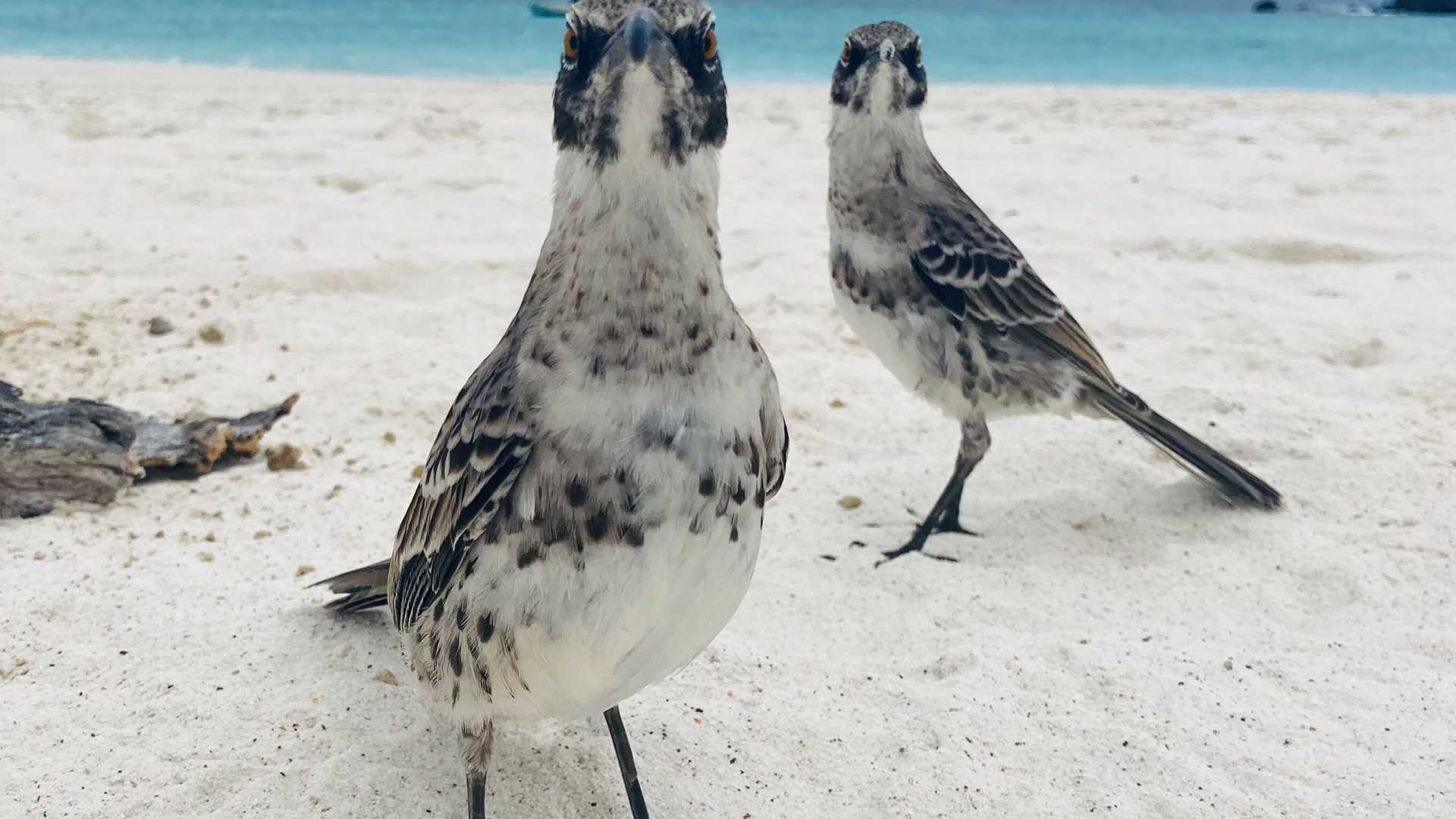As one of the oldest islands in the Galapagos, Espanola is located in the southeast of the archipelago.
The landscape of Espanola is impressive, with high cliffs, white sand beaches, and rocky terrain. The island is home to different species of birds. Many of the birds are endemic to the island, like the Espanola mockingbird or the waved albatross. Along the trail, we found different species of colorful reptiles resting on top of the rocks.
Early in the morning, National Geographic Islander II anchored in Gardner Bay on the east of Espanola. This white sand beach is a relaxing spot for swimming and enjoying the company of sea lions, which were the main attraction for our guests during snorkeling.
In the afternoon, we disembarked on the west side of Espanola. A rocky trail led us to the home of the waved albatross, a marine bird endemic to Espanola Island. We had the chance to observe the courtship dance of the albatross. We also spotted a chick waiting for his parents to come feed him. The parents regurgitate a special kind of fish oil that they produce in their stomach for the chicks.







